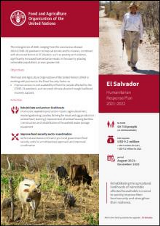Publications
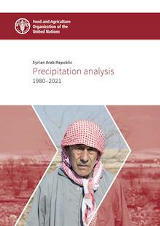
Syrian Arab Republic: Precipitation analysis
10/2021
This technical paper provides an analysis of the spatio-temporal trends of precipitation in the Syrian Arab Republic from 1980–2021, an analysis of precipitation during the 2020/21 agricultural season by governorate, and the implications for agricultural production.
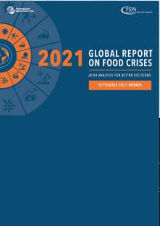
September update of the 2021 Global Report on Food Crises
10/2021
The September update of the 2021 Global Report on Food Crises (GRFC) reports on the magnitude and severity of acute food insecurity in 2021 in countries that qualified as food crises in 2020 in the GRFC 2021.
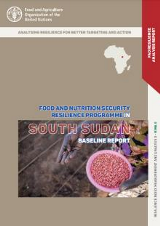
The Food and Nutrition Security Resilience Programme in South Sudan: Baseline report
09/2021
This report acts as a baseline for the Food and Nutrition Security Resilience Programme (FNS-REPRO) of the Food and Agriculture Organization of the United Nations (FAO), a four-year programme of USD 28 million funded by the Government of the Netherlands.
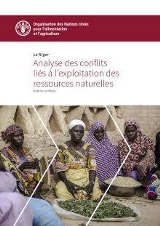
The Niger - Analysis of conflicts related to the exploitation of natural resources (IN FRENCH)
09/2021
L’analyse des conflits liés à l’accès aux ressources naturelles au Niger a permis de mettre en évidence l’ampleur et la complexité de ces conflits.
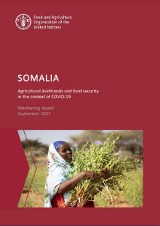
Somalia: Agricultural livelihoods and food security in the context of COVID-19
09/2021
This report shares an analysis of the effects of coronavirus disease 2019 (COVID-19) in the agri-food system in Somalia. It analyses the results of a field assessment conducted in January and February 2021.
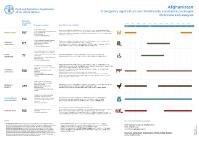
Afghanistan: Emergency agriculture and livelihoods assistance packages
09/2021
This factsheet presents a detailed overview of the main emergency agriculture and livelihoods assistance packages that FAO provides to the most vulnerable farming families in Afghanistan.
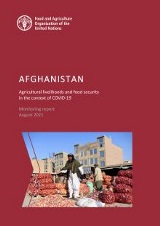
Afghanistan: Agricultural livelihoods and food security in the context of COVID-19
09/2021
Monitoring report, August 2021 – This report shares an analysis of the effects COVID-19 in the agri-food system in Afghanistan. It analyses the results of a field assessment conducted between 7 and 26 February 2021.

In their words: Farmers' stories of getting ahead of disasters
09/2021
Anticipatory action is the practice of forecasting disasters and acting before they occur or reach their peak.

Togo: Agricultural livelihoods and food security in the context of COVID-19 (IN FRENCH)
09/2021
Ce rapport propose une analyse des effets de la maladie à coronavirus 2019 (covid-19) sur le système agroalimentaire du Togo, en se basant sur l’évaluation menée en février 2021.

Burkina Faso: Analysis of conflicts over the exploitation of natural resources
09/2021
In Burkina Faso, the exacerbation of conflicts over natural resources and the rapid development of insecurity are sources of major concern for both the public authorities and the populations.

Mali: Analysis of conflicts over natural resources
09/2021
Due to the economic dominance of the agriculture sector, Mali is extremely dependent on natural resources and also vulnerable to the adverse effects of climate change.

Mozambique: Agricultural livelihoods and food security in the context of COVID-19
08/2021
This report shares an analysis of the effects of coronavirus 2019 (COVID-19) on the agri-food system in Mozambique. It analyses the results of a field assessment conducted in January and February 2021.
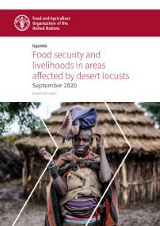
Uganda: Food security and livelihoods in areas affected by desert locusts, September 2020
08/2021
This report outlines the results of a household survey carried out in August–September 2020 to assess the impact of desert locust invasions on food security and livelihoods in Uganda.

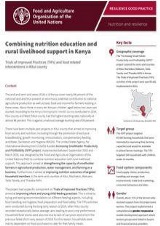
Combining nutrition education and rural livelihood support in Kenya
08/2021
The arid and semi-arid areas (ASALs) of Kenya cover nearly 84 percent of the national land and thus present an enormous potential contribution to national agricultural production as well as basic food and income for farmers residing in these areas.
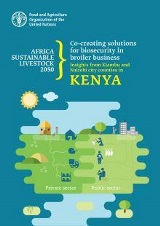
Co-creating solutions for biosecurity and broiler business: Insights from Kiambu and Nairobi city counties in Kenya
08/2021
The trend to urban and peri-urban livestock keeping is known in many developing and plays an important role in food security and livelihoods but can also pose a risk to the health of people.

